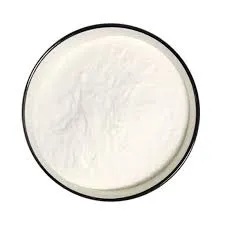
Dec . 12, 2024 10:02 Back to list
hydroxyethyl cellulose solubility in water
The Solubility of Hydroxyethyl Cellulose in Water A Comprehensive Overview
Hydroxyethyl cellulose (HEC) is a hydrophilic, non-ionic cellulose ether widely utilized in various industries due to its unique properties. As a derivative of cellulose, HEC is primarily obtained through the etherification of cellulose using ethylene oxide. Its solubility in water is a pivotal characteristic that influences its application across multiple fields, including pharmaceuticals, cosmetics, food processing, and construction.
Understanding Hydroxyethyl Cellulose
HEC is characterized by its high molecular weight and the presence of hydroxyethyl groups, which markedly enhance its solubility in water compared to its parent cellulose. The increase in solubility can be attributed to the introduction of hydrophilic hydroxyethyl groups, which disrupt the hydrogen bonding in cellulose that would typically impede water interaction. This property makes HEC particularly useful in aqueous solutions, allowing it to dissolve easily and form a stable viscous solution.
Factors Influencing Solubility
The solubility of HEC in water can be influenced by several factors, including
1. Molecular Weight HEC is available in various molecular weights, ranging from low to high. Generally, lower molecular weight HEC exhibits better solubility in cold water due to the decreased entanglement of polymer chains, allowing for easier interaction with water molecules. In contrast, higher molecular weight HEC may require heating or specific conditions to achieve complete dissolution.
2. Concentration As with many polymers, the concentration of HEC in the solution plays a crucial role in its solubility behavior. At low concentrations, HEC readily dissolves in water; however, as the concentration increases, the viscosity of the solution also rises, making it more challenging for the polymer to dissolve uniformly. At high concentrations, complete dissolution may require the application of heat or stirring.
3. Temperature The temperature of the water significantly affects the solubility of HEC. Higher temperatures tend to enhance solubility by providing more energy to the system, facilitating the disruption of intermolecular forces and promoting the dissolving process. Consequently, HEC solutions often perform better when heated prior to the addition of HEC.
hydroxyethyl cellulose solubility in water

4. pH Levels The solubility of HEC may also be impacted by the pH of the water, although this effect is generally more pronounced in solutions containing other ions or additives. In neutral to slightly alkaline conditions, HEC tends to maintain its solubility, while extreme pH levels can lead to hydrolysis or alteration of the cellulose chains, potentially affecting solubility.
Applications of Hydroxyethyl Cellulose
The solubility of HEC in water enables its use in a myriad of applications
- Pharmaceuticals HEC is used as a thickening agent, stabilizer, and excipient in various pharmaceutical formulations, including gels and suspensions. Its ability to form viscous solutions at ambient temperature is leveraged in controlled drug delivery systems.
- Cosmetics and Personal Care In the cosmetics industry, HEC serves as a thickener and emulsifier, enhancing the texture and stability of creams, lotions, and shampoos. Its water-solubility allows for easy incorporation into formulations.
- Food Industry HEC acts as a food additive and thickening agent, improving the texture and mouthfeel of food products. Its neutral taste and non-toxic nature make it suitable for a wide range of food applications.
- Construction In construction, HEC is often added to cementitious mixtures to improve workability and reduce water demand, making it a valuable additive in tile adhesives, stuccos, and other construction products.
Conclusion
The solubility of hydroxyethyl cellulose in water is a vital attribute that enhances its utility across various industries. By understanding the factors that influence its solubility, including molecular weight, concentration, temperature, and pH, manufacturers and researchers can leverage HEC's properties to develop innovative products that meet the growing demands of technology and consumer preferences. As HEC continues to find new applications in diverse fields, its role as a versatile, water-soluble polymer will undoubtedly remain significant.
-
Versatile Hpmc Uses in Different Industries
NewsJun.19,2025
-
Redispersible Powder's Role in Enhancing Durability of Construction Products
NewsJun.19,2025
-
Hydroxyethyl Cellulose Applications Driving Green Industrial Processes
NewsJun.19,2025
-
Exploring Different Redispersible Polymer Powder
NewsJun.19,2025
-
Choosing the Right Mortar Bonding Agent
NewsJun.19,2025
-
Applications and Significance of China Hpmc in Modern Industries
NewsJun.19,2025







